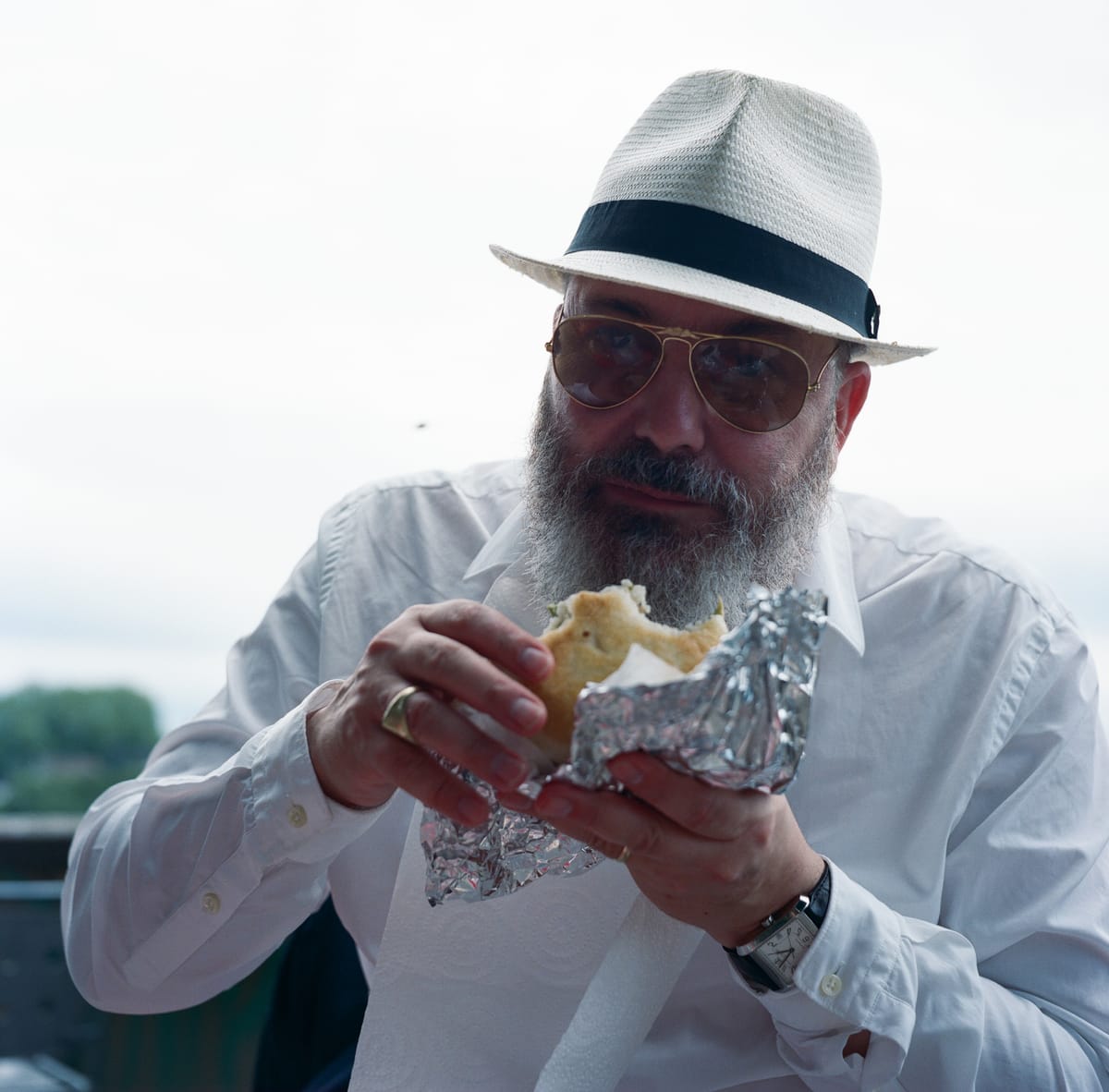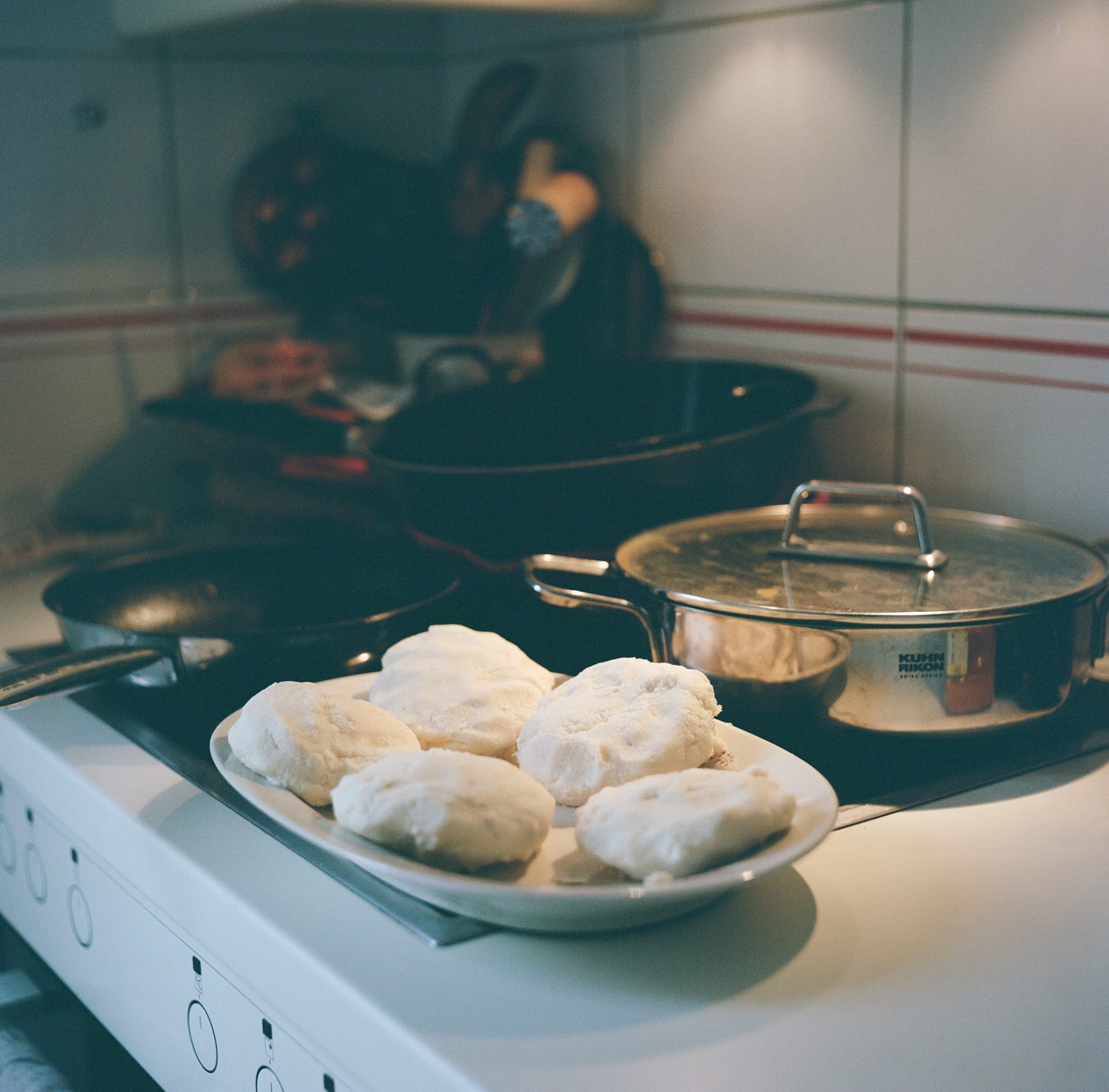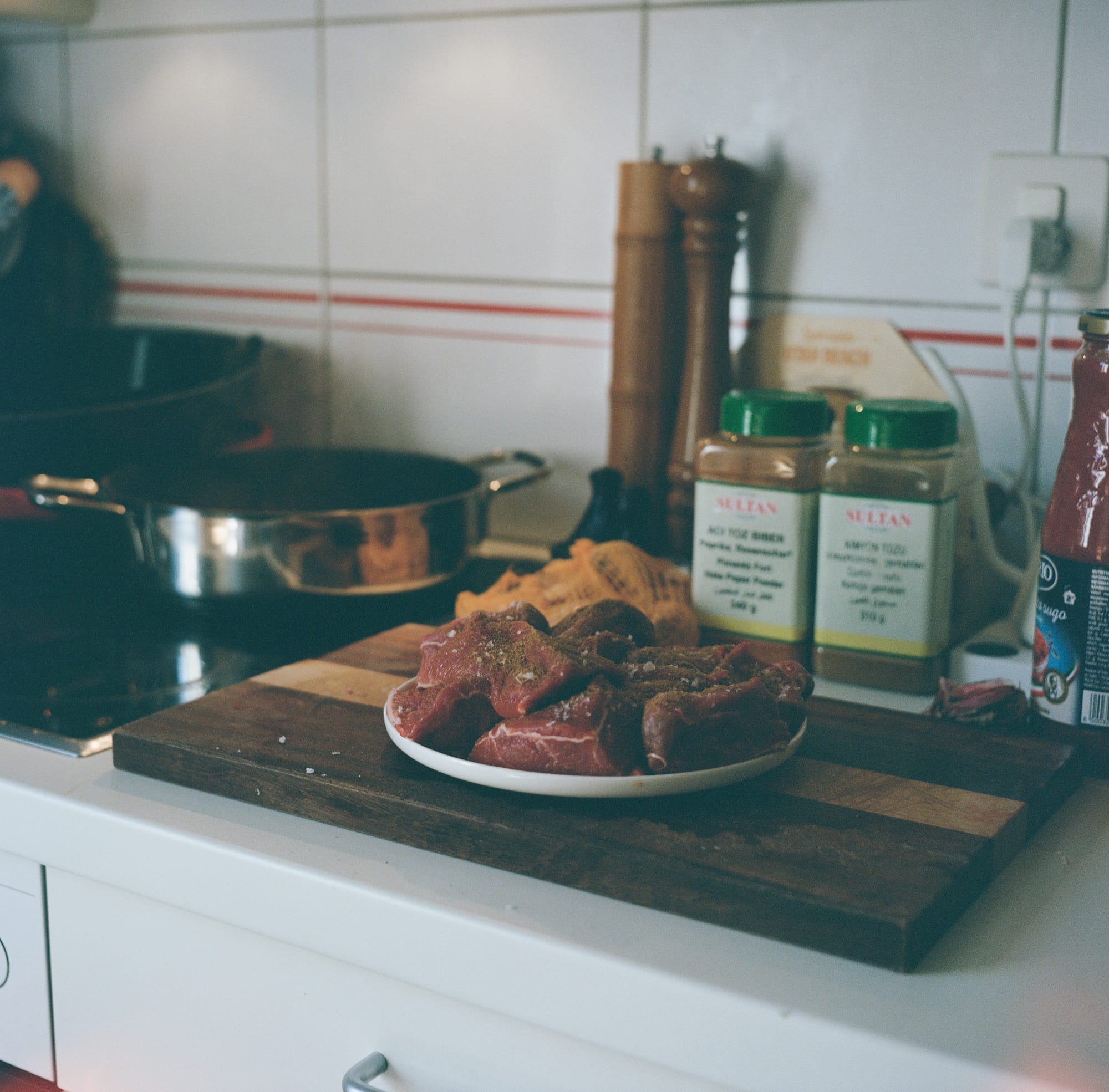What to eat VENEZUELA 🇻🇪 Arepa pabellón
The arepa pabellón is itself a super Venezuelan combination of two dishes: pabellón criollo, the national dish of shredded beef stew with rice, beans and fried plantains and arepas, the corn bread patties that serve as the foundational layer of a northern Latin American sandwich.

Arepa pabellón
Published July 25, 2025 · by Amanda Rivkin Häsler
Arepa pabellón is a fusion of culinary symbols of the Venezuelan nation and the primary peoples to form the bedrock of the contemporary nation: the indigenous, the Spanish and the Africans. The arepa pabellón is itself a super Venezuelan combination of two dishes: pabellón criollo, the national dish of shredded beef stew with rice, beans and fried plantains and arepas, the corn bread patties that serve as the foundational layer of a northern Latin American sandwich. Taken together, the delicious pops off the charts.
The arepa pabellón is also the fusion of populations of the Americas, with the Spanish interestingly making the least contribution. The name itself comes from the word "erepa" of the Cumanagoto people who lived in north and eastern Venezuela as arepas date to pre-Colombian times. They have been consumed for thousands of years in the territories of what are now Venezuela, Colombia and Panama. In Venezuela, the arepa is estimated to be 2,800 years old, with archeological evidence to match this prediction. The Spanish get credit merely for altering the name slightly from erepa to arepa.
The modern arepa remains mostly unchanged from the pre-Columbian version the indigenous would have made and consumed, though with some post-industrial innovations. Originally, the flour for arepas was made at home in a time-consuming process that consisted of grinding maize. However, in the 1950s, the Venezuelan engineer Dr. Luis Caballero Mejías revolutionized the process with the invention of pre-cooked arepa flour. It was a sudden and instant success, one that has endured to the present.

When mixed with water and a bit of salt, occasionally oil, butter, eggs, milk or even lard, arepa flour forms the delectable dough from which the round discs of patty-like arepas are formed. They can then be grilled, fried, baked or even boiled, before being sliced and stuffed to make the equivalent of a sandwich.
Harina PAN is the most popular brand in Venezuela today. A Venezuelan-American friend advised against using anything else, and indeed, the first attempt at arepas we made with normal corn flour was so dry we ate the filling out and discarded the arepa base. "Forget about it," she counselled and basically ordered that we order Harina PAN.
I looked online and found it and a few days later, a box with the masa de arepa, masarepa, masa al instante or harina precocida (all valid names for the innovative product) arrived at the door. A few days later, we were picnicking in the park beside the cathedral overlooking the Aare River in Bern with perfect arepas. Always, always listen to locals and remember you don't know what you don't know – they are there to fill in that fraction of the so-called Rumsfeld quadrant.

Arepas are so enormously popular that Venezuelans can eat two per day every day year-round. It is common to eat them as snacks or sides or as a full meal as they are the cornerstone of the country's diet, which is what makes their ubiquity as a global cuisine in many places now such a disgraceful testament to the leadership of the last quarter century. As food goes where people do, it is now something a national dish in exile.
The poverty of the last quarter century that has pushed people out has brought their food with it, not the demands of a global elite and traveling middle-class tourist that can afford to go anywhere and everywhere. Before the food shortages in 2015, it was estimated Venezuelans consumed around 30 kilos a year of Harina PAN and its off-brand variants. But with a shortage economy brought on by terrible economic policy, the average Venezuelan consumes just 15.5 kilos per person per year, according to the National Assembly's commission on the agricultural crisis a decade ago.
Venezuela's long tradition of openness to outsiders and immigrants, including after the Second World War, when Jews, Italians and others left Europe, and in the closing decades of the last century, when Colombians were fleeing their country's brutal civil war and narco gangs, has flipped. Suddenly, over two and a half decades characterized by an authoritarian slide, the order of things and the glue of Venezuelan society has unraveled under the revolutionary Bolivarian regime of the late Hugo Chávez and his successor Nicolás Maduro.
In the first fifteen years of the new century, 1.8 million Venezuelans sought a better life abroad. In 2016, 150,000 alone left, the highest number in a decade. Before Chávez was elected in 1998, the number of Venezuelans leaving the country was low but now Venezuelans "are struggling to feed themselves" and "have to stand in line for hours to get their price-regulated bag of Harina P.A.N. or haggle in the black market and spend many times the official cost," according to NPR. What was once "a symbol of everyday sustenance," has now become "but a luxury."
With so many Venezuelans emigrating out of the country, more than three million have landed in neighboring Colombia, where one of the great food fights of history has reignited over the origin of the arepas. In many ways, it "mirrors other food fights around the world," as The New York Times writes, though in substance, it is more akin to the friendly feud between Ecuador and Peru over ceviche than Israel and Lebanon or Palestine with hummus, where hummus is just a proxy for greater political problems.
Chávez successor Maduro has tried to use arepas as "a nationalist rallying point" and a "political tool," The Times notes. In Colombia, the "mixing of cultures has made the arepa debate more prevalent than ever." And while there is discussion of a culinary rivalry and debate over who had it first, there are also substantive differences in form between the two nations versions of arepas. Whereas Venezuelan arepas are softer, Colombia's variety is crunchier. Venezuelans also usually make them at home, whereas Colombians are content with store-bought.

As far as stuffing and toppings go, varieties are truly infinite and one can get as imaginative as one wishes, but to take an arepa and stuff it with pabellón criollo, the shredded beef stew that dates back to colonial times and the African communities brought to the new world for servitude, is to really take it to the next level and serve the merger of two culinary symbols of Venezuela. Topped with the black beans that comprise another element of the dish, a bit of cheese and even avocado if desired, is really to feast like a Venezuelan in the best of times, with all the flavors of the nation in one bite.
Recipe
Ingredients:
For the pabellón:
3 small onions
Olive oil
Maldon salt
6 cloves of garlic
1 red bell pepper
900 grams of beef
Orange juice
Hot water
20 grams of cilantro
For the black beans:
3 small onions
Olive oil
3 cloves of garlic
1 can of black beans
Salt
Cumin
For the arepas:
2 ¼ cups Harina Pan
2 ½ cups cold water
1 teaspoon salt
Avocado
Shredded cheese, mozzarella or cheddar or a combination
Step 1: Dice the onions and sauté in a pan with a bit of olive oil. Add a pinch or two or three of salt.
Step 2: Chop the garlic and red bell pepper and add to onions, stirring occasionally.
Step 3: Cut your beef into cubes of one to two inches. Sprinkle with cumin and salt and pepper.
Step 4: Add cubed beef to pan, searing on both sides. Gently pour a thin layer of fresh orange juice over the beef. Then cover with hot water, adding a bunch of cilantro and cover and turn to low heat. Allow to slow cook 1-2 hours until beef can be removed and shredded. Then shred the beef, adding a bit of paprika and salt to taste.
Step 5: While the beef is still slow cooking, you can begin to prepare the black beans by dicing the onions and add to the pan with olive oil. Cook at low to medium heat so they are somewhere between sauteed and caramelized. Turn down heat as onions begin to brown and add garlic.
Step 6: Drain and rinse the beans and add to onions and garlic. Add a pinch of salt, stir and turn down heat. Turn off when onions caramelize with beans.
Step 7: Combine harina pan and slowly add water, mixing with your hands to remove lumps. Let sit five minutes. Add salt and combine and then shape into small discs.
Step 8: Place olive oil in a pan over medium heat. Once heated, add the small discs, heating five minutes on each side until you have proper arepas.
Step 9: Once arepas cool, slice open and fill with beef, cheese, beans and avocado.
Tips, tricks and notes:
Per the advice of a Venezuelan-American friend and former colleague, you really need something called Harina PAN. Normal corn meal will not cut it. In Switzerland, you can order this online from La Guadalupana, which also has a shop in Feldeggstrasse 53, Zürich.
Learn where to eat Venezuelan food in Switzerland.
Follow our social media pages @swissglobaldining on Instagram, TikTok and YouTube